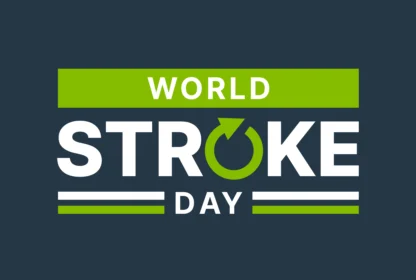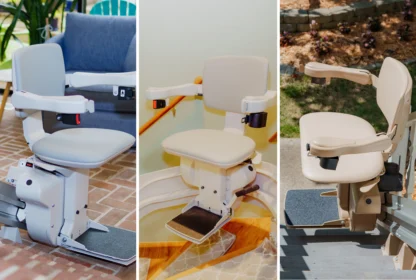
Falls can be dangerous, especially for the elderly and those facing mobility challenges. However, there are things you can do to prevent falls—and create a safer space for all. Whether you’re taking care of a loved one and looking to learn about home safety for seniors, welcoming visitors into your space, or you’re wanting insights on how to prevent falls at home for yourself, 101 Mobility is here to help with a fall prevention home checklist. We’re passionate about your safety and are sharing tips on assessing your home’s current layout and making improvements to prevent falls.
Why a Fall Prevention Tracker Is Great for Your Home Safety
Falls account for three million emergency room visits annually, with one in four Americans 65+ falling each year. These can be scary numbers, but most falls are preventable. And by learning how to safeguard your home, you can avoid becoming one of these statistics. At 101 Mobility, we know mobility and accessibility through and through. We strive to keep those in our community protected and we’re excited to share some lifesaving mobility safety tips and solutions with you.
Wondering how to prevent falls at home? By utilizing a room-by-room strategy, you can systematically tackle common trip hazards in the home, take a proactive approach—and give yourself peace of mind.
Your Room-By-Room Fall Prevention Tracker: Identifying Common Trip Hazards
Ready to get started? Read our fall prevention home checklist for each room of your home and learn about aging-in-place home safety. We’re here for you every step of the way.
Entryways & Hallways: The First and Most Traveled Paths
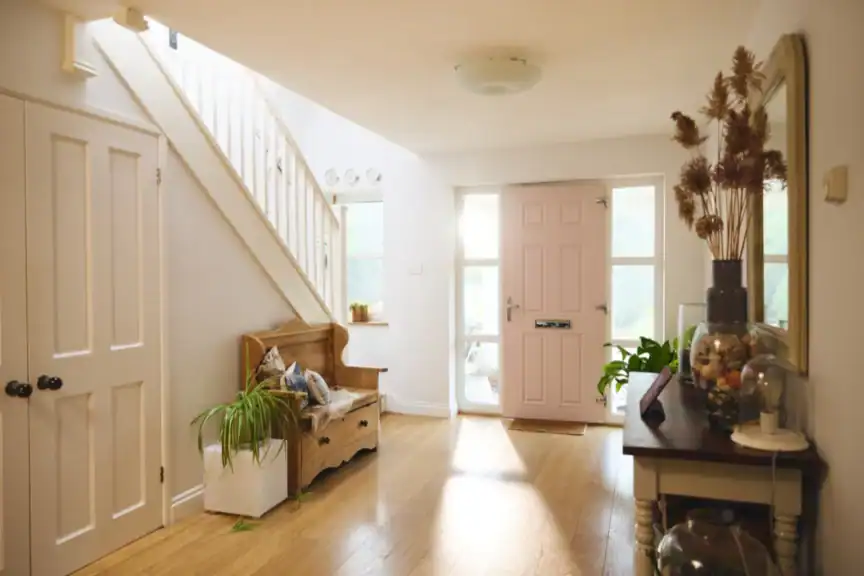
Entryways and hallways can be especially dangerous as they are frequently used spaces that often come with their own set of specific obstacles. However, you can make them safer with a few simple steps.
Common Trip Hazards:
- Clutter: Entryways and hallways may be crowded with things left behind, like shoes, bags, mail, or umbrellas.
- Loose Rugs or Mats: These areas are also prone to senior fall hazards like carpets. Tip: Welcome mats can be especially dangerous as these often move or roll up unexpectedly.
- Poor Lighting: Whether it’s dim porchlights or a broken entryway lamp, visibility can be affected and make falls more likely when poor lighting is present. This is particularly dangerous at night.
- Uneven Thresholds: Doorways can be especially challenging for those with limited mobility and those using mobility devices, as the rise in elevation can be hard to navigate and may cause some to stumble.
- Electrical Cords Near Doorways: Cords to lamps, televisions, and other commonly used appliances are likely to be near doorways.
Prevention Strategies:
- Designate Clear Storage for Items: Consider a shelf, basket, or other types of storage for those pesky items that are often left out.
- Secure All Rugs: Opt for rugs with a non-slip backing or remove carpets that may be especially dangerous.
- Install Brighter Lighting: Explore your options when it comes to lighting systems, as this is an especially important component of home safety for seniors. You may also want to think about having motion-sensor lights installed both indoors and outdoors.
- Use Threshold Ramps: Installing ramps can be lifechanging, as they make doorways easier to navigate and help with seamless transitions. At 101 Mobility, we offer a variety of wheelchair ramps designed to make your life easier and safer, from modular ramps and multi-fold ramps to threshold ramps. Learn more about how mobility scooters go up ramps.
- Coil and Secure Electrical Cords: Get hazardous cords off the floor and secure them to the wall for safety—and easier access.
Want additional mobility safety tips on navigating entryways or looking to learn more about home safety for seniors? See if a wheelchair ramp or platform lift may be right for you.
The Living Room & Dining Area: Social Hub, Hidden Hazards
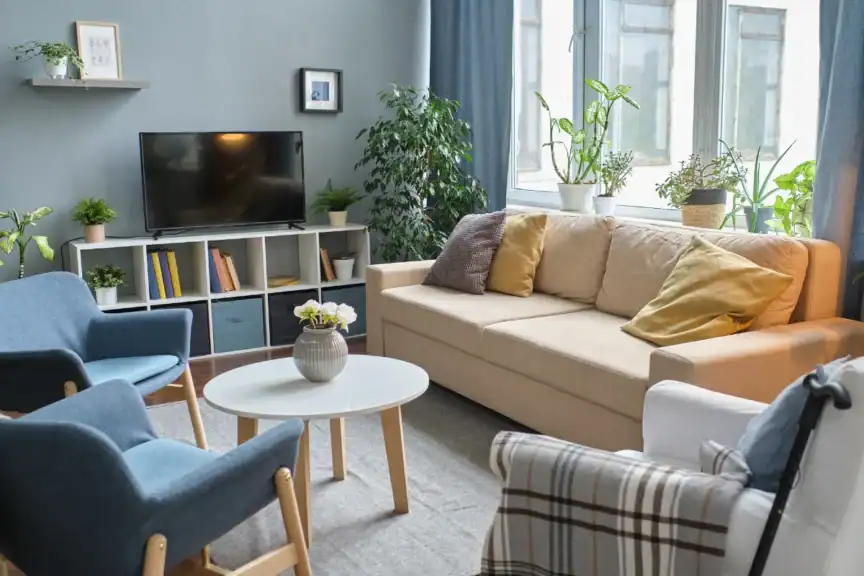
As the most-used room in the home, the living room should be a welcoming and safe place for all. Get insights on spotting common trip hazards in the home that may be lurking in your living room.
Common Trip Hazards:
- Loose Throw Rugs or Area Carpets: These are also common in living room areas and can present additional danger due to their size.
- Clutter: Is your living room a catch-all for clutter? You’re definitely not alone. However, it’s important to gather up things like magazines, remote controls, pet toys, and blankets before they become a hazard.
- Wires and Cords: Whether you’re charging your laptop or using the vacuum, there are likely loose cords in your living and dining room you’ll want to take note of.
- Tricky Furniture Placement: Depending on the size of your home, furniture may be creating more narrow pathways. Pieces of furniture may also be unstable, particularly if there are wheels that allow the item to roll. It’s important to keep this in mind when identifying living room trip hazards.
Prevention Strategies:
- Remove or Secure Rugs: Similar to the strategy in other rooms, you’ll also want to secure loose rugs or remove them altogether in the living room. This is pivotal when it comes to aging-in-place home safety.
- Keep Walking Paths Clear: Clutter happens. If you like having your favorite objects where you can easily access them, don’t panic. Simply ensure they’re away from walking paths or placed where someone can’t slip on them.
- Organize Cables and Cords: Ditch the tangle. Try mounting cords to walls or streamlining the cable situation with a small extension cord that can be tucked away.
- Rearrange Furniture: It may be time to shake things up as you’ll want to arrange your furniture to create wide, clear routes. Play around with what layout works best for your family and situation.
- Ensure Seating Is Stable: Get rid of chairs, couches, and other furniture that may not work well for those prone to falls. Ensure all furniture is secure and can’t roll away. In addition, if you or a loved one has difficulty getting in and out of a seated position, you may want to explore lift chairs, offered by 101 Mobility. These useful tools look like your average reclining chair, but actually contain a lifting system to help make getting in and out of the chair much easier.
The Kitchen: Where Spills and Objects Collide
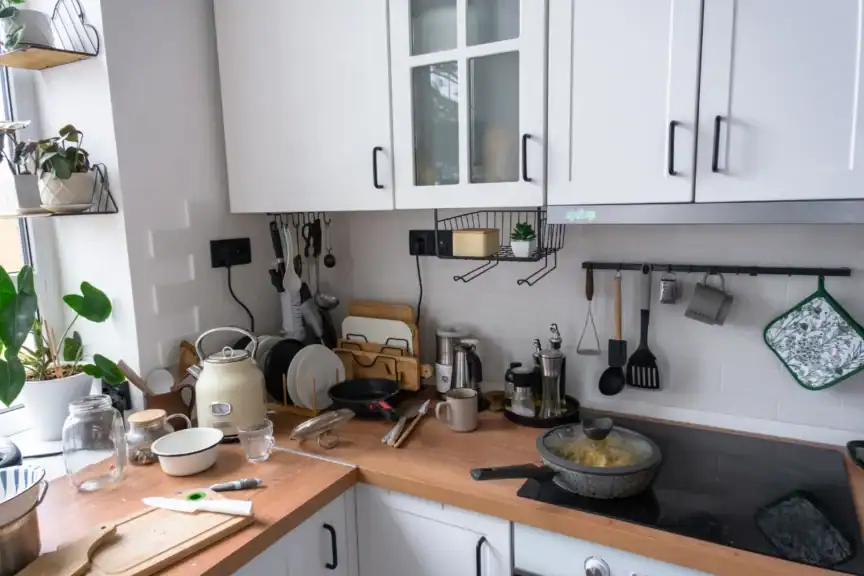
There are a variety of activities that take place in the kitchen—and a variety of objects around that may be senior fall hazards. Whether you’re cooking up something delicious for the whole family or chatting over a cup of coffee with a friend, you’ll want to ensure that your kitchen is in its safest form. Learn all about common kitchen fall hazards and how to prevent falls at home.
Common Trip Hazards:
- Spills: The kitchen is prone to spills, with slippery and dangerous items like water, oil, or food often finding their way onto the floors.
- Loose Floor Mats: When it comes to home safety for seniors, it’s critical to assess the rug situation in your kitchen as well, as these can also slip around and cause falls.
- Items on the Floor: The kitchen is a common place for cluttered home dangers and that clutter is often located in common walking areas. Check the ground for pet bowls, recycling bins, trash bags, and more.
- Reaching for Items: Whether it’s a cereal box on top of the refrigerator or a mixer in a bottom cabinet, reaching for items can be dangerous, especially if you’re relying on unsteady chairs or stepstools to do so.
- Dim Lighting in Food Prep Areas: Poor lighting can have big consequences in the kitchen area as well, making it hard to walk through and navigate.
Prevention Strategies:
- Wipe Up Spills Immediately: Spills happen, but you’ll want to make sure you clean them up quickly and keep the floor tidy at all times. Keep towels or wipes nearby to make this easier.
- Remove Loose Kitchen Mats: Reduce fall risk by completely removing kitchen mats or using non-slip home solutions.
- Store Frequently Used Items at Waist Height: Skip the stretching and reaching. Place the objects you use most where you can get to them most easily.
- Use a Sturdy Stool: Investing in a safe and secure stepstool can work wonders when it comes to keeping your family protected.
- Install Bright Lighting: Make sure you have the right amount of lighting you need over the counters and stovetop to prevent accidents.
The Bathroom: Slippery Surfaces and Hard Falls

The bathroom is also a frequently used place and it comes with its own unique set of common home trip hazards. That’s why we’ve included it on our fall prevention home checklist. We’re breaking down everything you need to know about bathroom fall prevention and how this relates to aging-in-place home safety.
Common Trip Hazards:
- Wet Floors: Whether it’s from the shower or a leak, water has a way of making its way to the floor in bathrooms.
- Slippery Tubs/Showers: Bathing areas can present additional challenges, especially for the elderly. They can be slippery, particularly if they don’t have non-slip surfaces or mats.
- Lack of Support: Bathing areas are also hard to navigate because they often don’t have hand holds for stability.
- Low Toilet Seats: These can make it difficult for many with mobility issues, increasing the chance of a fall.
- Clutter Around the Toilet or Sink: Things tend to gather in the bathroom, particularly around the toilet and sink, from unused toilet paper to makeup, curling irons, and more.
- Dim Lighting: Dim lighting, especially in the shower or tub, can increase the risk of a fall. This is especially troublesome at night.
Prevention Strategies:
- Use Non-Slip mats or Strips: Place these items in the tub or shower and on the floor to greatly increase traction.
- Install Grab Bars: Grab bars can help provide an extra layer of support when moving around the bathroom. They’re especially useful near the toilet and in bathing areas. Check out 101 Mobility’s grab bars that can be installed on almost any surface and in almost any location. Plus, learn more about the importance of grab bar installation.
- Consider a Raised Toilet or Commode: Making the toilet temporarily or permanently higher can improve safety in the bathroom and these options are customizable to your needs.
- Keep the Floor Clear: Remove rugs, towels, and additional items from the floor, keeping it clear at all times.
- Improve Your Lighting: You may want to consider installing brighter lighting and purchasing some high-quality nightlights.
In addition to this fall prevention home checklist, we’re also here to help with tips on improving bathroom safety for your aging parent and making your shower handicap accessible.
Bedrooms: Nighttime Hazards and Pathways
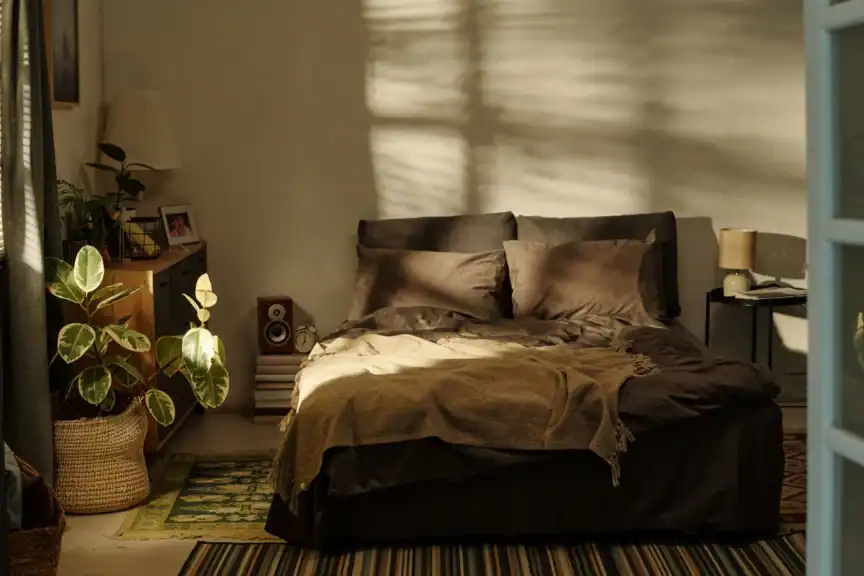
Your bedroom should be a source of comfort and safety—not a hazard. Check out our guide for keeping your sleeping quarters safe, so you can rest easy. Let’s talk about all things bedroom fall prevention.
Common Trip Hazards:
- Clutter on the Floor: Clothes, shoes, books, and other items tend to gather in the bedroom.
- Cords: Whether they’re for common household items like lamps and phone chargers or for medical equipment, you likely have many cords around your room.
- Difficulty Reaching a Light Switch: If you find yourself struggling to turn on the light by your bed, this can also prove to be hazardous.
- Dark Path to the Bathroom: Those late-night bathroom trips can be especially dangerous if the path is not well-lit.
- Bed Height: If the bed is too high or too low, you or a loved one may struggle to get into it, adding another layer of danger.
Prevention Strategies:
- Keep the Floor Tidy: Take some time every day to clear your floors of clutter and put it out of commonly used areas.
- Route Cords Away: Clear all walking paths of cords, working to reroute them under nightstands and other safer areas.
- Place a Lamp Within Easy Reach: Ensure you can reach your lamp or lightswitch from your bed, so you never run the risk of navigating your room in the dark. You may also want to consider clap-on, motion-sensor lights, and nightlights for pathways.
- Adjust Your Bed Height: Double check that your bed height allows your feet to be flat on the floor when seated on the edge.
Stairs: A Major Source of Falls
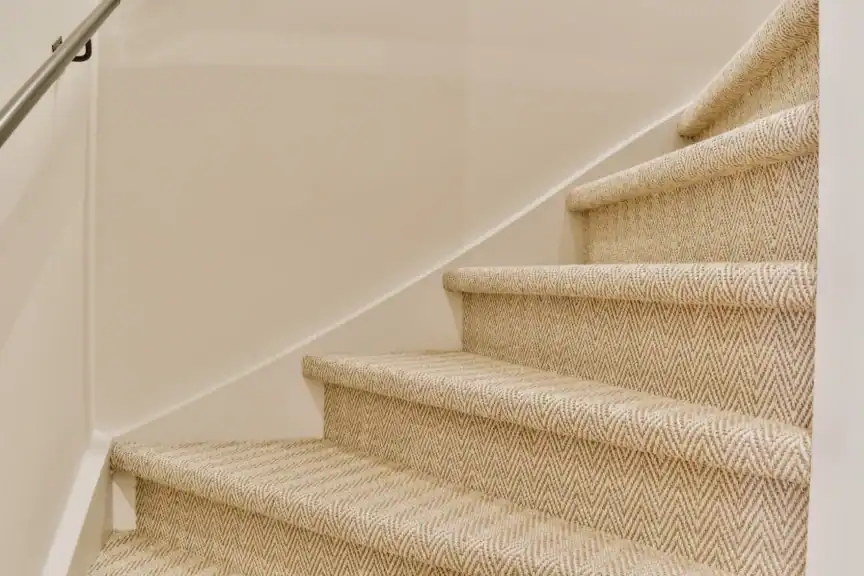
Staircases are locations commonly associated with falls and while they can be dangerous, there are ways to make your stairs less hazardous—and keep home safety for seniors top of mind. Check out our stair safety tips below.
Common Trip Hazards:
- Clutter on Steps: Going up and down the stairs can be a pain, which is why clutter is often left on the steps to be dealt with later.
- Loose or Torn Carpet: Are your stairs a bit older? The carpet may show signs of wear and tear, creating unexpected senior fall hazards.
- Inadequate Handrails: If your staircase is missing a handrail, only has one handrail, or currently has a loose handrail, this can present additional problems when it comes to balance and safety.
- Inadequate Lighting: Many staircases are poorly lit, making it difficult to see when walking up and down them—especially at night.
- Uneven Steps or Worn Treads: An older staircase may also have uneven steps or worn treads, making them less stable.
Prevention Strategies:
- Never Leave Anything on Stairs: While it can be tempting to leave that laundry basket on the bottom step for later, make sure you never place anything on the stairs.
- Update Your Staircase: Replace or remove loose carpet, consider non-slip treads, and keep your stairs in tip top shape.
- Explore Other Solutions: Install sturdy handrails or grab bars on both sides of the stairs. In addition, our stairlifts, available in straight, curved, and outdoor varieties, are ideal safety solutions. They’re customizable and make it easy to get up and down your stairs without strain. Learn more about our stair access solutions and explore the top reasons to install a stairlift.
- Ensure Bright Lighting: Add light switches at both the top and bottom of the staircase, ensuring bulbs are bright and reliable.
Looking for additional staircase solutions or want to learn more about how to prevent falls at home? Consider our selection of home elevators or see if a through-the-floor lift may be right for you. And if a loved one does happen to take a fall, don’t panic. Get tips on how to safely lift an elderly person.
Beyond Hazards: Comprehensive Fall Prevention With 101 Mobility
Homes are meant to be lived in and with life comes clutter. Common trip hazards in the home are bound to happen, but by following our mobility safety tips above and using this room-by-room fall prevention home checklist, you can make your home safer for all. Are you a caregiver? We’re here to support you. Get tips on taking care of an elderly loved one and check out our caregiver resources.
No matter what your unique situation is, we’re here to help with info on home safety for seniors, fall prevention tips—and beyond. We offer free in-home consultations, where our professionals can help identify hazards, assess your needs, and more to find solutions right for you. We offer a wide range of products designed to help you or a loved one live more safely and independently. Check out our stairlifts, ramps, vertical platform lifts, grab bars, and more, all designed to not only help reduce falls, but to improve your freedom and comfort as well.
At 101 Mobility, we prioritize professional, safe installation and ongoing support, so you never have to worry about a thing. Let’s work together to create a safer home. Reach out today.
